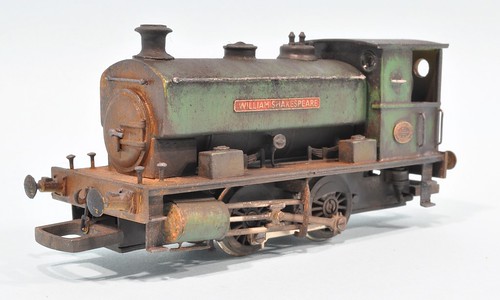I notice from your latest entry on your Workbench that you are about to weather the water tank wagon. I want to try my hand at weathering. Can you recommend any books or DVDs that will show me how to go about this (in simple terms)?
This is more difficult than I thought.
By default, as an occasional finescaler, I'm required to mention Martyn Welches, "The Art of Weathering" from Wild Swan. Trouble is, it's not the right book for a beginner and I'm not convinced you can't get 80% of the results a lot more simply. Once you get into weathering, it's an essential buy and it IS well writen and a pleasant read.
More pragmatic is Tim Shackleton's book on weathering locomotives which I reviewed back in 2011. It's not all airbrush work which I think is vitally important. Yes, an airbrush is a boon but not essential. You can do a lot with normal brushes and powder.
Iain Rice's wagon books from the 1990s cover a bit of dirty rolling stock work and George Dent has done much in this area in his books too.
Monthly magazines are always covering weathering, sometimes to the annoyance of those reader who wouldn't consider mucking up a model. They better learn to live with this as it's a subject not going away any time soon. I always make models dirty in my articles.
You can of course, find lots of help on the web. I've mentioned weathering loads of times on this very blog. There are, I understand, other web sites available.
Assuming you are thinking about rolling stock, here's a few suggestions:
- Buy some really cheap wagons. Your first efforts will be unsatisfactory but an excellent learning experience so don't work on anything good.
- Learn to dry-brush.
- Play with weathering powders. You can always wash the results off the wagon if you aren't happy.
- Everything on the railway goes brown. Track colour enamel and powder is your friend.
- Have a go. You can't learn this stuff from a book, only practise will work. Don't be scared, this is toy trains not brain surgery. No-one dies if it goes wrong.
More suggestions from readers in the comments please. This is one of those topics where there are a wide range of experiences so let's share them.

4 comments:
A couple of suggestions, Phil:
1. Learn to observe the world around you; and see how use, weather, sun and decay leave their mark on vehicles, buildings and the natural world.
2. Don't be parochial! Be open to other modelling disciplines and hobbies, as you might just pick up a useful weathering technique that you haven't seen before.
There is no right way to weather. For just the weathering of open wagon interiors, I have used and been pleased by multiple methods from dry brushing, to powders, to washes, and a mix between. I own an airbrush but never use it as I dont like the loss of fine control.
Might it also be worth at books and websites about painting military models - model cars - possibly even some of the higher end wargaming stuff?
As with a lot of things, probably better not to follow everything you see slavishly - rather, just take note of the bits that look interesting and "go easy" with this stuff at first.
Names that spring to mind include Mig Jiminez (weathering - especially military) - Marc Reusser - and Virgil Suarez a.k.a. "Dr. Cranky" (mainly cars).
I'm sure that other people will be along shortly with their own suggestions.
While I think of it, some US model railway forum sites might also be worth a look - especially ones with lots of On30 content - ones that spring to mind include freerails.com and railroad-line.com.
I started by practicing on the Great British Locomotive collection models, a low cost way to practice on locos. I now have evolved my technique and use powders, washes. (Mig) and oilbrushers. I’m also using some armour techniques which are covered well by YouTube videos.
Post a Comment